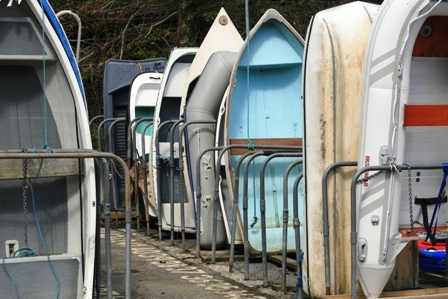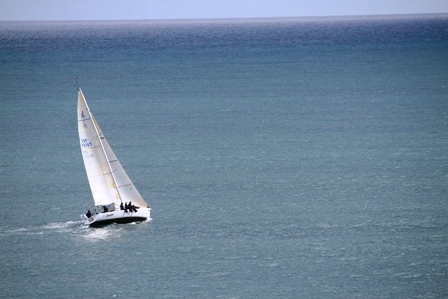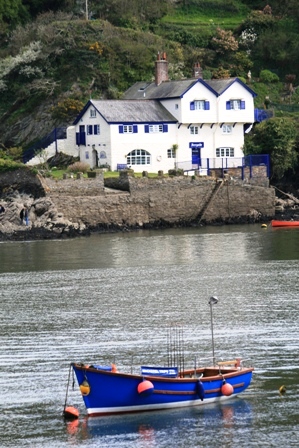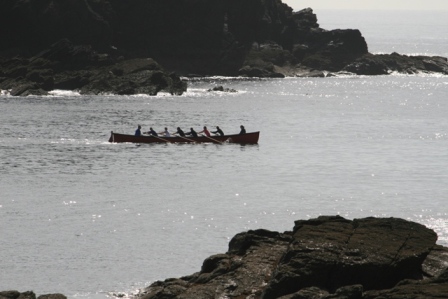
Evidence of a nautical heritage
Applying the heritage test
Regular readers will doubtless appreciate The Leisure Review’s commitment to publishing well-informed and balanced articles for people who work in and care about the heritage part of our sector. But for one edition only we have allowed Mick Owen, buoyed by a week in heritage-rich Cornwall, to discuss the issues as he sees them.

Evidence of a nautical heritage
It may come as a surprise to those readers whose working life is bound by Jennie Price’s sport system that there is such a thing as a ‘heritage sector’, especially as most sports developers were drawn to their business by a ‘passion for sport', rather than the more appropriate ‘passion for endless meetings and box-ticking’. And sporty people can tend to be a tad blinkered. But according to the people who distribute lottery funding, ‘heritage’ runs “from museums, parks and historic places to archaeology, natural environment and cultural traditions”. Tesco has a much narrower definition and suggests that buying someone membership of English Heritage opens up a world “from storybook castles to breathtaking stately homes”, while Historic Scotland defines the heritage for which it is responsible as including monuments, shipwreck sites and battlefields but, curiously enough, neither shortbread nor tartan.
Just what constitutes ‘heritage’ might be an ‘angels on the head of a pin’ debate, were it not for the fact that funding and support follows the definition. When UNESCO designated Saltaire a world heritage site it was not because the West Yorkshire industrial village had greatly influenced the garden city movement; it was so that agencies and individuals will continue to cough up for its preservation and protection. However, a recent trip to Cornwall has shown that ‘heritage’ takes many more forms than are dreamt of in the philosophies of most funding bodies.
What, for example, is pilot gig racing, who funds it and should they? This form of rowing is clearly held to be a sport by Sport England, who bought at least four of the esoteric, six-person, clinker-built, Cornish elm craft required by gig clubs last year. And 44 gig-racing students from Cornish schools competed at the National Junior Indoor Rowing championships on 17 March last and acquitted themselves well. But the Cornish Pilot Gig Association – the world governing body – see themselves as “curators”, holding things in trust “for future generations” as much as a regulatory body; and the words ‘sport’ and ‘development’ are not paired anywhere on their website. The closest thing they employ to a buzzword is ‘community’ and, with men’s, women’s, under-16, under-14 and veterans’ classes at their events, it is clear that the gigs and their crews are woven into the fabric of Cornish coastal towns and villages. A week spent watching the Fowey estuary from various vantage points convinced me of the popularity of the pastime as the local club’s various crews fitted in training runs as and when the rowers were available and the boats were spare. If gig racing is a sport then it’s one founded in a deeper, more useful tradition.
Which is an argument that might also be used for sailing around the south-west peninsula. Apparently, the deep water off the south coast of Cornwall is better for the weekend admirals and, with Fowey (did I tell you its pronounced ‘Foy’?) the most protected of natural harbours, it was no surprise as Easter approached to see the river filling with prettily-bobbing evidence that despite the credit crisis the ‘haves’ still have. But given they are following in a tradition that includes a man called Rashleigh who sailed with Drake and, confusingly, Raleigh, perhaps we have to allow them to follow their star – or their state-of-the-art navigation aids – unmocked. Evidence of the historic importance of the harbour include a fort flying an English Heritage flag, two 14th century blockhouses and some very old pubs, one of which belonged to the aforementioned Rashleigh in olden times.
Which is where my research unearthed two more gems of Cornish heritage. Tribute is brewed by the 150-year-old, family-owned St Austell brewery and when purveyed in a genuine local pub by a friendly landlady it passes muster. No one would expect my up-country palate to adjust quickly enough in a week, despite great efforts to acclimatise it, but Tribute is hailed by no less a drinker than Roger Protz so it had to be worth the effort. And it was while I was working on this particular cultural project that the northern lass next to me remarked on a family of uniformly rotund, short people to-ing and fro-ing through the bar who were clearly not speaking English. “It’s either Cornish,” she said, “or they’re elves.” Too much Tolkien for her and a chance to rub shoulders with real native Kernewek speakers for me; unless they were Polish, of course. The re-growth of Kernewek in Kernow since the seventies is either an example of middle-class foolishness or the regeneration of something fundamentally valuable. Nothing instils a sense of place like its language (if you doubt me try telling someone from Sunderland you like her Geordie accent and see if you get lucky) so to experience local, country people using a language that goes back to pre-Roman times was, in my book, a turn-up.
A bit like meeting Lenny Henry in the woods when out walking the dogs perhaps? Or smiling at Dawn French as she squeezed past you in her Daimler when you’re jogging along the esplanade? And yes, these did both happen to members of our party. Not so unlikely when you consider that last year they bought the big house on the cliff between our humble, rented, fisherfolk’s cottage and town, but nevertheless exciting in a ‘Hello’ sort of way. Not quite as exciting as finding out that Daphne du Maurier had lived in the house at the back of us for a bit, of course, but mildly titillating.
In Fowey, you must understand, finding a house that the author of Rebecca and Jamaica Inn inhabited is a bit like finding an American tourist on the du Maurier trail: it’s not hard. In fact it’s a bit difficult to avoid the American, Spanish and German tourists as you pootle around the very few, very narrow Fowey streets. It’s a bit of a honey pot, you see, especially for cruise ships. It’s far from unusual to see a three- or four-storey monster squatting like an over-fed, maritime cuckoo in Fowey roads [‘Roads’: nautical term meaning a stretch of sheltered water near land. Ed] and with them come tourists seeking Daphne; and with them comes commercial opportunity. The town has more than its fair share of fudge shops, a proliferation of boutique hotels unusual in Cornish fishing ports and a ten-day Daphne Du Maurier Festival that boasts everything from an exhibition of census records in nearby Polruan and the Tywardreath Players offering The King’s General to Colin Dexter, Susan Penhaligon and Tony Benn chatting on. Say what you like about Ms Du Maurier – and I would like to say she writes structureless romances with unlikely plots and sketchy characterisation – but she has an enduring appeal and is as a magnet to all manner of people who just seem to love her.
Which brings me back to Dawn. Because Dawn is a national treasure. She should fly an English Heritage flag. Like Morecambe and Wise she should be listed by the government and always free to terrestrial viewers. She epitomises something English, she is valued and we will miss her when she finally retires to her seaside retreat. And that is what defines whether something belongs in the heritage pile when we sort the funding washing. Forts are important, even if they are falling down, stuck on top of a dangerously steep hill and covered in seagull dung. Proper beer matters. Pilot gig racing is worth developing as it links communities internally and externally; and looks like a load of fun. And someone should fund them all.
Mick Owen is the managing editor of The Leisure Review, managing director of TLR Communications Ltd and a connoisseur of romantic fiction.
The Leisure Review, May 2009
© Copyright of all material on this site is retained by The Leisure Review or the individual contributors where stated. Contact The Leisure Review for details.


